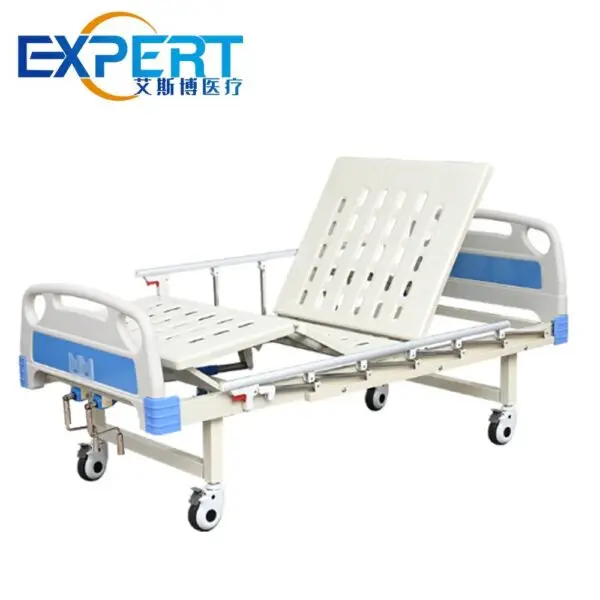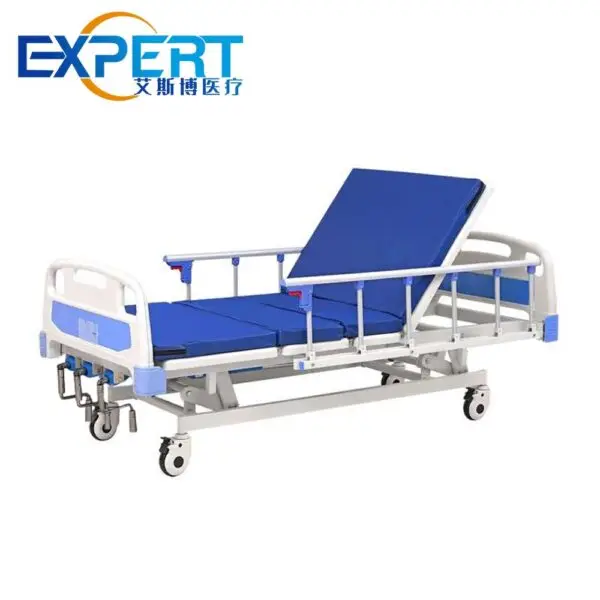Address
304 North Cardinal St.
Dorchester Center, MA 02124
Work Hours
Monday to Friday: 7AM - 7PM
Weekend: 10AM - 5PM

In healthcare environments, ensuring patient comfort is essential for promoting recovery and well-being. Manual adjustable beds have become indispensable tools in hospitals, offering flexibility and customization to meet individual patient needs. This blog explores in-depth how manual adjustable beds improve patient comfort, detailing their benefits, features, case studies, and practical considerations.
Manual adjustable beds are designed with manual controls to adjust the bed’s positioning, including the head and foot sections. Unlike traditional hospital beds, these beds allow for personalized comfort adjustments, enhancing patient care and comfort during recovery periods.
Manual adjustable beds are designed with a range of features that significantly enhance patient comfort and contribute to positive healthcare outcomes. One of the primary benefits is their ability to promote better circulation among patients. By allowing for adjustments that elevate the legs or raise the head, these beds help improve blood flow throughout the body. This is particularly beneficial for patients recovering from surgery or those with circulatory issues, as it reduces swelling and discomfort associated with prolonged immobility.
In addition to enhancing circulation, manual adjustable beds play a crucial role in preventing pressure ulcers. These beds allow caregivers to adjust the positioning of patients, redistributing pressure and relieving stress on vulnerable areas of the body such as heels, elbows, and the lower back. This proactive approach to pressure ulcer prevention is essential in maintaining skin integrity and overall patient comfort during extended hospital stays.
Furthermore, manual adjustable beds support improved respiratory function by enabling optimal sleeping positions. Patients can be comfortably positioned in a slight elevation, which helps alleviate symptoms of respiratory conditions such as asthma or chronic obstructive pulmonary disease (COPD). This elevation promotes easier breathing and reduces the likelihood of airway obstruction during sleep, contributing to better rest and recovery.
Key features of manual adjustable beds include height adjustability for ease of patient access and caregiver assistance, ergonomic designs that support patient comfort and safety, various mattress options to cater to individual needs, and robust weight capacities to accommodate diverse patient populations. These features collectively enhance the overall patient experience and caregiver efficiency.
Comparing manual adjustable beds with electric adjustable beds and standard hospital beds reveals distinct advantages. While electric beds offer automated adjustments and higher cost, manual beds provide cost-effectiveness, reliability, and simplicity in maintenance, making them a preferred choice in many healthcare settings for their practical benefits.
Addressing frequently asked questions and concerns about manual adjustable beds, such as maintenance requirements, cost considerations, and safety features, ensures healthcare providers have comprehensive information to make informed decisions regarding bed selection and integration into patient care protocols.
Effective integration of manual adjustable beds into healthcare facilities requires careful planning, staff training, and patient education. Hospitals that successfully implement these beds prioritize patient comfort and safety while optimizing clinical workflows to deliver superior care and outcomes.

| Metric | Manual Adjustable Beds | Electric Adjustable Beds | Standard Hospital Beds |
|---|---|---|---|
| Pressure ulcer rates | Lower | Moderate | Higher |
| Patient satisfaction | High | High | Moderate |
| Ease of caregiver tasks | Easier | Easier | More challenging |
Manual adjustable beds represent a significant advancement in hospital care, promoting patient comfort, improving clinical outcomes, and enhancing overall healthcare delivery. Their versatility, ergonomic design, and therapeutic benefits make them indispensable tools for healthcare providers aiming to prioritize patient-centric care and optimize recovery pathways.
Q:Are manual adjustable beds suitable for all patients?
A:Manual adjustable beds can accommodate a wide range of patient needs; however, individual assessments are recommended to ensure suitability.
Q:What are the maintenance requirements for manual adjustable beds?
A:Regular inspections and maintenance are essential to ensure optimal functionality and longevity of manual adjustable beds.
Q:How do manual adjustable beds compare to electric models in terms of cost?
A:Manual adjustable beds are generally more cost-effective upfront and require simpler maintenance, making them a practical choice for many healthcare facilities.
